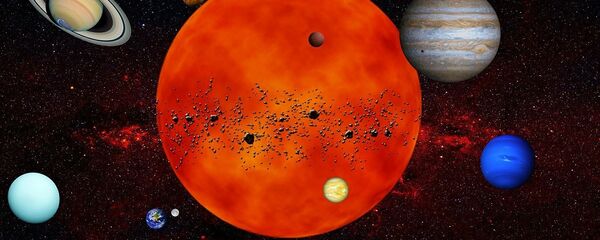The Research and Design Institute of Chemical Engineering (NIIKhimMash), Russia's leading enterprise for space-based life support systems, has confirmed plans to create a new CO2-H2O conversion system in its recently published annual report.
The new regenerative water system joins other projects being developed by the institute, including a shower, sauna, washbasin, washing machine, and sanitary and potable water systems.
In a closed environment, the carbon dioxide formed when a cosmonaut breathes should not exceed 0.5 percent of the atmosphere (on Earth it's only 0.03 percent). Anything above that leads to discomfort, weakness, headaches and problems with concentration and attention span. A carbon dioxide concentration of 13 percent is lethal for human beings.
"There is a limit in the concentration of carbon dioxide under which a person can work," Institute specialist Margarita Levinskih explained. "After that, when the body accumulates excess carbon dioxide and becomes unable to work, hypercapnia occurs; the functions of respiration, circulation, and brain activity are disturbed." With this in mind, she noted, any new technologies for processing carbon dioxide in space can only be welcomed.
At the moment, the primary carbon dioxide removal system aboard the International Space Station is the Vozdukh (i.e., Air) system created by NIIKhimMash. The system uses special zeolite absorbers to capture carbon dioxide and expel it from the station.
Now THIS is "Vozdukh," scrubbing CO2 from the air, since we don't have trees on the #ISS! pic.twitter.com/3Q9twXpA7r
— Terry Virts (@AstroTerry) 18 марта 2013 г.
"One possible cause for this is a high level of carbon dioxide, which affects the vascular tone and leads to problems in cerebral circulation and subsequently, vision problems," Suvorov explained. "In the Russian segment [of the station], the existing standards have remained. But these standards will most likely be revised. It's desirable to have a carbon dioxide level of 0.3 percent or even less," the scientist added.
Several other NIIKhimMash-created systems already operate onboard the ISS, including the SRV-K2M multifiltration unit, the SRV-UM urine-based water reclamation system, the Electron-VM oxygen electrolysis system and the SOA-MP system, which cleans the atmosphere inside the ISS from micro impurities.



